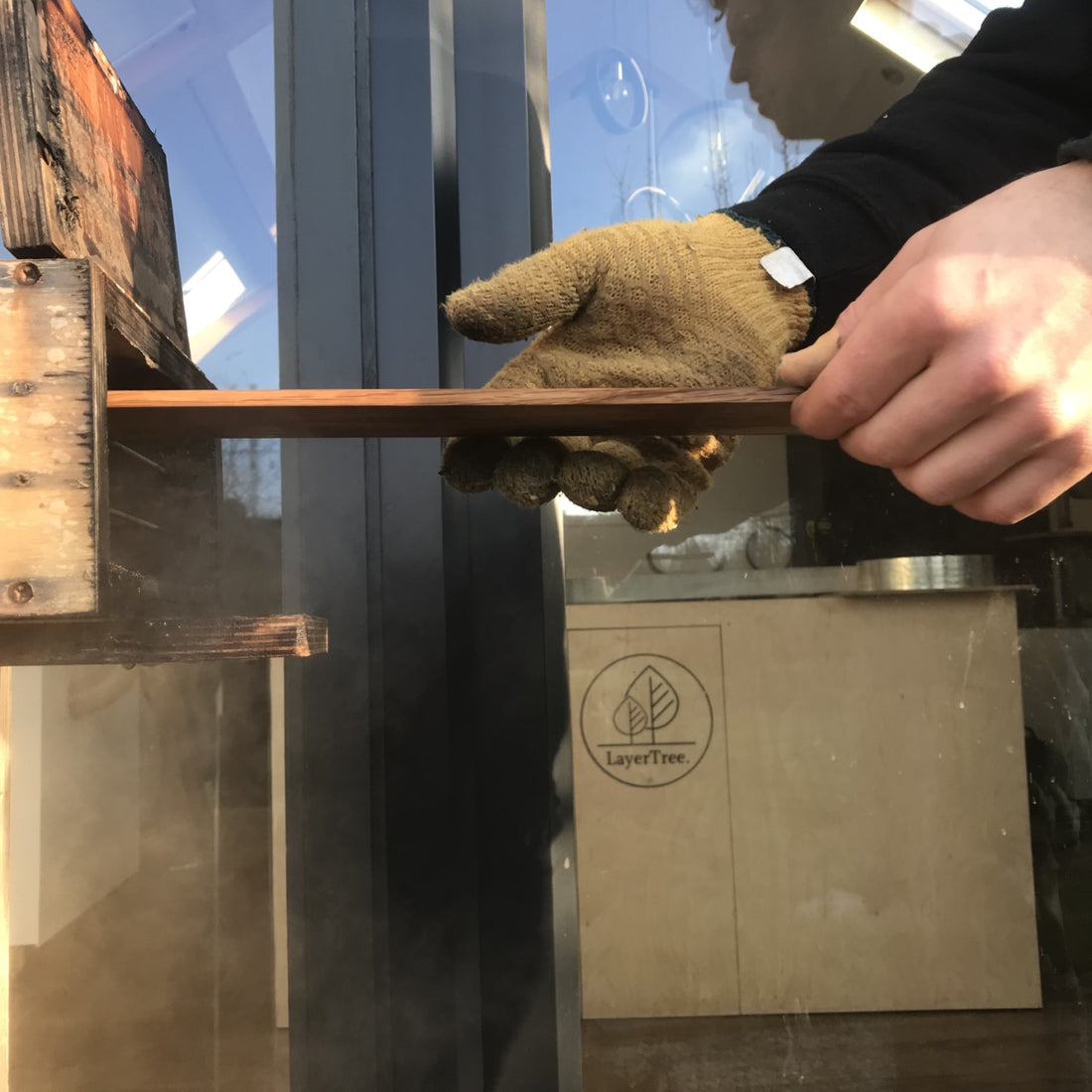
What is Steam Bending?
Share this blog
A rare post from Myles to spark your interest in steam bending...
How we discovered steam bending
I have always had a love for manufacturing and had more-or-less taken over my Dad's shed by the time I moved out 10 years ago. When we moved out and into a rented cottage, the potting shed left by the previous owners was quickly turned into the smallest wood-workshop in Suffolk. Being efficient is something we have always been quite good at but being efficient with space was creating its own challenges. Problem solving is a fundamental part of the design process so a new fascination arose for manufacturing techniques that take up minimal space.
I had recently designed and made a stool and loved the curved feature incorporated in it so looked for some more efficient ways to create this shape.
I discovered steam bending.

The Steam Bending Technique
The quick version - steam bending is essentially encasing wood in steam (usually a box filled with steam) until it becomes pliant. The newly formed shape can then be fixed into shape using jigs until it has dried and holds its new shape.
The more technical version - wood needs to be steamed for a specific amount of time based on the thickness and current moisture level. The heat and moisture from the steam softens the lignin (a glue-like protein that holds the cellulose fibres together) in the timber. This allows us to manipulate the wood into a new position. You can simply bend or twist a piece of wood with your hands but this creates unpredictable outcomes. We use moulds and jigs to control the bend but sometimes the wood does still do what is wants, not what you want! Even during the drying process the internal tensions within the timber can cause your perfect curve to budge into a bumpy slope!
Selecting the right timber to steam bend is really important. Some woods are considered better for steam bending - Ash, Birch, Cherry, Oak and Walnut are considered easier woods to work with. The grain of the wood is so important as well, especially knots and tight grain. These need extra clamping and support during the drying process to maintain their bent shape. It certainly is a simple idea yet a tricky technique to master.

The Steam Bending Process
We have been fine tuning our process over the last 6 years and through copious amounts of trial and error we have found a process that really works for our design process. You might have seen steam bent timber before without realising it. Steam bending ribs to form the hull of boats goes back to the Bronze age with more and more chairs being made using this technique up to more recently. Steam will have been used to create the bend if you can see that the bend is made from one piece of wood rather than a layering of woods. The later is laminating which uses glues and presses.

Why we love steam bending
You might be wondering why we slog away bending pieces of wood outside on a cold, rainy day when we could easily just cut them out in a nice warm workshop. As with most things, there is a little more to it than that... I was definitely drawn to the ideas of implementing an age old process to create clean, modern furniture and fittings. But it's not just the age of the process which is fascinating.
Steam bending a product into its complete, finished form eliminates the need for any unpleasant glues or fixtures. No separate pieces to glue together or nail/screw into place. It is just the piece of wood.
It is also an incredibly efficient use of the wood. Picture our circular mirror. To make this without the steam bending process, we would have to start with a square piece of wood and cut out the centre and the four unwanted corners and throw them away or cut several curved pieces out from blocks and joint them together.That would be waste of wood and time! Although we might be able to minimise the waste by using the centre piece for smaller products the energy to to this would still be much higher. By steam bending our mirror we start with a single rectangle of wood and bend it into the circle - no waste.

Since becoming interested with furniture, we have both loved incorporating the Scandinavian style into our home.This style is focused around minimal material use with a light, clean look. It seems a perfect style to pair with steam bending and our design intent.
If you have gained some new knowledge from reading this post we would love to hear about it. Or perhaps it has sparked some questions about steam bending. You can find us on Instagram to ask us more about our experience of steam bending.
